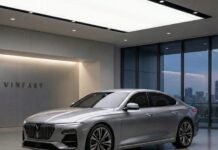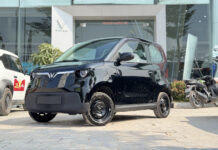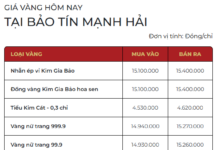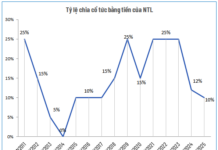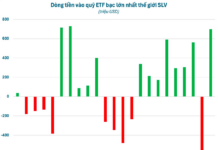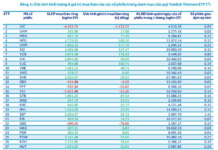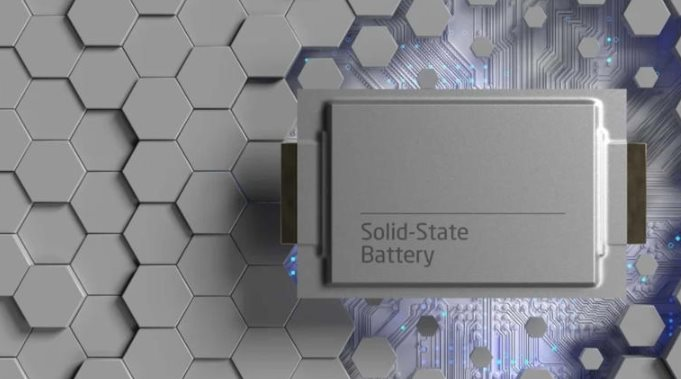“I never thought I’d switch to an electric scooter, but now I save over half my monthly fuel costs, and I don’t have to worry about oil changes or engine repairs,” shares Nguyen Hai Nam, an office worker in Hanoi. The electric scooter he’s been using for nearly a year, he says, “rides smoother and performs better than I expected.”
Nam’s story reflects a growing trend in Vietnamese urban centers: consumers are shifting from skepticism to trust and enthusiasm for electric scooters. This change is expected to reshape the two-wheeler market in the coming years.
Market Shifts Faster Than Anticipated
Just a few years ago, electric scooters were mostly seen on school campuses or in small residential areas. Users were hesitant due to concerns about weak performance, rapid battery degradation, long charging times, and limited charging stations.
However, a September 2025 survey by Asia Plus Inc. of 200 respondents in Hanoi and Ho Chi Minh City revealed that 54% would choose an electric scooter for their next purchase, while only 24% still preferred gasoline-powered bikes. In Hanoi, the preference for electric scooters rose to 60%. Notably, over 80% of participants currently own Honda bikes, yet 32% are considering VinFast—indicating a shift in brand perception.
According to Motorcycles Data, Vietnam’s two-wheeler market sold approximately 2.08 million units in the first eight months of 2025, a 15.2% increase year-on-year. Among these, electric scooters saw the highest growth in demand.
Specifically, electric scooters with motors under 4 kW, which don’t require a license (equivalent to internal combustion engines under 50cc), saw an 89% sales increase compared to the same period in 2024. Licensed electric scooters, equivalent to engines over 50cc, surged by 197%.
Motorcycles Data also reports that VinFast currently holds the third-largest market share, behind Honda and Yamaha. In the electric scooter segment, VinFast leads the market. Honda and VinFast’s sales grew by 6.3% and 447% (fivefold) respectively compared to last year, while Yamaha’s sales dropped by 8.6%. Notably, Honda’s August sales fell nearly 22% from July, signaling a slowdown in traditional gasoline bikes.
Three Key Drivers of Changing Perceptions
This shift isn’t driven by short-term trends but by three critical factors: lower operating costs, expanded charging infrastructure, and improved product quality.
A full charge for an electric scooter costs just 3,000–4,000 VND per 100 km, 50–70% cheaper than gasoline for the same distance. Users also save on maintenance, as electric scooters don’t require oil changes, spark plug cleaning, or regular engine servicing.
Over the past three years, tens of thousands of public charging stations have been installed nationwide in residential areas, shopping centers, parking lots, and gas stations. Charging has become as convenient as refueling, boosting user confidence for longer trips.
New electric scooter models feature modern designs, top speeds comparable to 110–125cc gasoline bikes, smooth operation, and stable acceleration. Many also include smart features like remote locking, GPS tracking, and smartphone connectivity, enhancing user convenience.
In this context, VinFast has emerged as a pioneer in promoting electric scooter adoption in Vietnam. With over 600 distributors and charging stations across all 63 provinces, the company aims to sell 1.5 million electric scooters by 2026.

Models like the Klara S, Evo200, and Feliz S are highly rated for their stable performance and up to 8-year battery warranties. Beyond mid-range and premium models, VinFast also offers affordable options under 20 million VND, such as the Motio and Evo200 NEO, targeting students, first-time buyers, and urban commuters. These models ensure reliable performance, durable batteries, low charging costs, and compact, user-friendly designs.
Hong Hanh from Ho Chi Minh City, who switched to the Evo200 after a decade with gasoline bikes, shares: “Initially, I doubted an electric scooter could handle my daily commute. But after six months, I’m impressed by its smooth ride, zero emissions, and week-long battery life. I won’t go back to gasoline bikes.”
Toward New Consumer Habits
Market research firms predict that if current growth continues, electric scooters could account for 30% of Vietnam’s two-wheeler sales by 2030. This momentum is driven by cost savings, green vehicle incentives, and advancements in battery and fast-charging technology. Recent government directives, such as Hanoi’s plan to ban internal combustion engine (ICE) bikes from July 2026 and Ho Chi Minh City’s restrictions on ICE bikes, further accelerate electric scooter adoption.
On major streets in Hanoi, Ho Chi Minh City, and Da Nang, electric scooters are becoming a common sight—quieter and cleaner than their gasoline counterparts.
From initial skepticism to widespread acceptance, Vietnam’s electric scooter journey highlights a significant shift in consumer habits. As charging infrastructure improves, battery technology advances, and domestic companies invest heavily, the transition from gasoline to electric scooters seems inevitable.
VPBank CEO’s Vision: Aiming for the Top Spot in Margin Lending Within Five Years
With a robust capital foundation and extensive risk management expertise, VPBank CEO Vu Huu Dien confidently asserts that the goal of becoming the top player in the margin lending sector is entirely achievable.
Deputy Prime Minister: Equitization Aims to Strengthen Enterprises, Not Sell Land
Deputy Prime Minister Hồ Đức Phớc emphasized, “Our privatization efforts are not about selling land; they are about enhancing the capabilities of businesses, fostering a stronger, more robust, and sustainable economic growth.”




